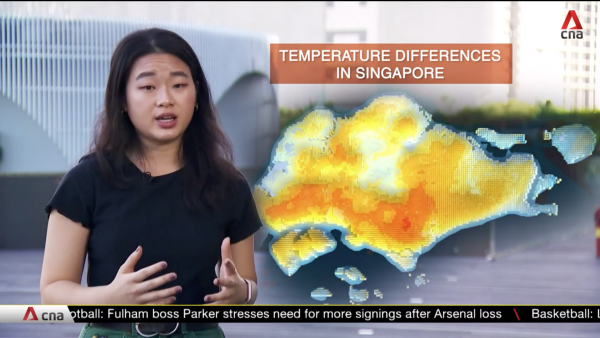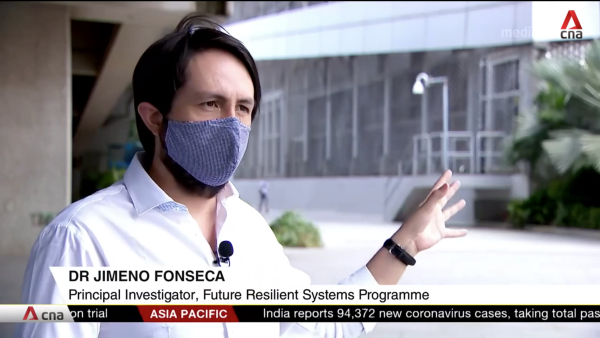Looking into solutions to reduce urban heat
In a CNA news segment, Prof. Winston Chow and Dr Jimeno Fonseca describe what contributes to the urban heat island effect and how it can be mitigated with strategies such as district energy.
Featured on CNA
 Dr Jimeno Fonseca, principal investigator at the Future Resilient Systems, says that district energy systems requires a coordinated approach to get buy-in from the diverse users and stakeholders in a particular district or neighbourhood.
Dr Jimeno Fonseca, principal investigator at the Future Resilient Systems, says that district energy systems requires a coordinated approach to get buy-in from the diverse users and stakeholders in a particular district or neighbourhood.
 Prof. Winston Chow, principal investigator of the Cooling Singapore project, describes how concrete, asphalt and glass surfaces in densely built areas, such as the CBD, trap heat and release heat at night, leading to urban heat island effect.
Prof. Winston Chow, principal investigator of the Cooling Singapore project, describes how concrete, asphalt and glass surfaces in densely built areas, such as the CBD, trap heat and release heat at night, leading to urban heat island effect.

In a CNA news segment on urban heat, external pageProf. Winston Chowcall_made explained how surfaces in densely-built environments, such as concrete, asphalt and glass, contributes to the urban heat island effect. Prof. Chow, who is a principal investigator of the Cooling Singapore project at the Singapore-ETH Centre, describes how these surfaces trap heat and release heat at night, leading to warmer nights in built areas such as the CBD.
Dr Jimeno Fonseca, principal investigator at the Future Resilient Systems (FRS) programme, talks about how district energy systems could reduce energy consumption, thereby reducing anthropogenic heat. What is needed, he said, is a coordinated approach at the planning stage, such that users and stakeholders are in line with the decision on energy system for the district or neighbourhood. Dr Fonseca is principal investigator for the Climate Resilience in High-Density Cities module in FRS.
Watch the external pagenews segment herecall_made
